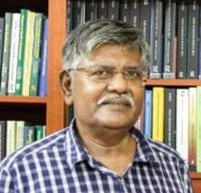In early 2020, during the first phase of the COVID-19 pandemic, the world witnessed a sudden spike in migrants returning to their home countries (“return migration”) due to loss of employment in their host countries. This trend was no different in the State of Kerala in India, whose economy is known for its heavy reliance on migrant remittances, especially from the Arabian Gulf countries. But what distinguished Kerala from other parts of the world was its access to reliable and readily available data on Keralites who lived abroad and were stranded outside in precarious conditions. Based on Kerala Migration Survey’s (KMS) estimate of 2.1 million expatriates abroad, the Government of Kerala proactively carried out its COVID-19 response by facilitating their safe return and by setting up 250,000 hospital beds and quarantine facilities in April, 2020. This instance presents an example of what migration data can achieve in informing evidence-based policy solutions and preparedness in the context of an unprecedented global health crisis like this.
The KMS began as a periodic data exercise at the sub-national level in 1998, administered by Centre for Development Studies (CDS). Since then, State and non-State entities such as the Ministry of Overseas Indian Affairs (MOIA), World Bank, and Government of Kerala’s Department of Non-Resident Keralite Affairs (NORKA) among others have been its partners. Over the past two decades, the scope of KMS has spanned various trends and patterns including problems faced by migrants in Kerala and abroad, measurement of return migration, data on remittances and their utilization, cost of migration, the impact of migration on families left behind, gender and social costs of migration, geographic aspects of migration and distribution, impact of migration on education, unemployment and employment, and demographic characteristics of migrants disaggregated by sex, age, marital status, education and occupation.
Methodologically, KMS chose households as its primary unit of analysis. To this end, primary data was obtained by employing a stratified multistage random sampling technique in both rural and urban areas of Kerala. During an interval of five years from 1998 to 2003, the KMS was successful in generating comparable panel data at the sub-national level for 5,000 households and about 14,000 individuals in Kerala. To ensure comparability of data at the national level, select surveys were also aligned with the Population Census administered by the Government of India. In the 2018 survey, KMS collected data for 15,000 households. Informed by this innovative model’s success, KMS was replicated in other Indian States such as Goa, Punjab, Tamil Nadu, and Gujarat and two others states such as Odisha and Jharkhand and Kerala in the process of conducting migration surveys in 2023.
The success of KMS points to an opportunity to replicate these surveys and understand the impact of international migration across countries and regions, informed by their respective economic, socio-political, and cultural contexts. According to IOM’s Global Migration Data Analysis Centre (GMDAC), there exists a data gap in terms of obtaining “accurate” and “comparable” data on international migration. GMDAC also notes that there is an asymmetry when it comes to the nature of data collection. For instance, data on topics such as student migration, ratification of international conventions, migrant stocks, remittances, and human trafficking are widely collected, while other topics such as migration flows, irregular migration, health of migrants, the impact of migration policies, recruitment costs, return migration, smuggling, migrant integration, and missing migrants receive less attention.
It is in such scenarios that sub-national migration surveys like KMS can add value and fill in the existing gaps, often overlooked within migration statistics obtained at the national or international level. As we argue in this book chapter, micro-level surveys like KMS can be used to inform and complement other macro-level surveys such as UN DESA’s “Inquiry Among Governments on Population and Development” (the ‘Inquiry’). The ‘Inquiry’ with its thematic module on International Migration began as a data exercise in 1963 and was later repurposed in 2018 (during Twelfth Inquiry) to collect bi-annual comparable data from governments to monitor Sustainable Development Goal (SDG) Indicator 10.7.2 which focuses on “the number of countries with migration policies to facilitate orderly, safe, regular and responsible migration and mobility of people.” The SDG Indicator 10.7.2 was jointly developed by UN DESA and IOM to review the SDG Target 10.7, which focuses on “the implementation of planned and well-managed migration policies.”
To understand the interlinkages between migration and development, both qualitative and quantitative data at the international, regional, national, and sub-national levels are crucial. To this end, we propose that an India Migration Survey (IMR) be launched, modeled on the lines of the KMS. As envisioned by our team at IIMAD, the IMR 2025 proposes to have a sample size of 718,000 households spread across the 718 districts in India. This can not only contribute to evidence-based migration policy frameworks at the national level but also help monitor India’s progress on the SDG Target 10.7.



Join the Conversation